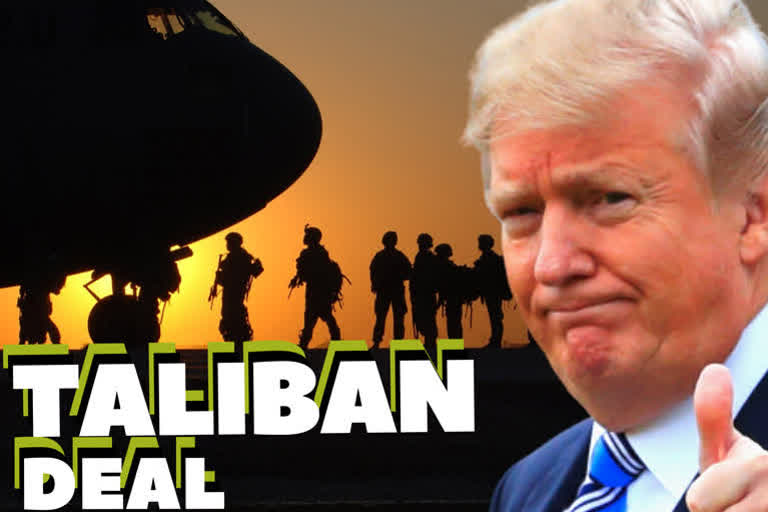Hyderabad: Washington and the Taliban are set to sign a deal on Saturday to secure America's exit from its longest war through gradually withdrawing troops and starting talks between Kabul and the insurgents.
Know about US-Taliban peace deal The process went through a lot of ups and downs since the start of the war in 2001.
Another advantage to the deal is that it will open doors for countrywide ceasefire and commitment from the Taliban not to harbour terrorist groups like al Qaida.
Here are some details about the Taliban:
Who is Taliban?
The literal translation of Taliban is 'students'. They refer themselves as Islamic Emirate of Afghanistan who began their rule in Afghanistan after the fall of Kabul in September 1996.
The group mainly consisted of religious students under Mohammed Omar who was also known as Mulla Omar.
Read more:Uncertainty looms ahead of US-Taliban deal signing
The beginning:
1994 – Taliban was a group of religious students that played a major part in the growth and success of the group.
1996 – It established the Islamic Emirate of Afghanistan that became the powerhouse of the Taliban.
By 1998 they controlled 90 per cent of Afghanistan.
What did they do?
They destroyed the economy and infrastructure of Afghanistan. Basic supplies were in desperately short supply.
They practised their austere version of Sharia or Islamic law. Before being removed from the power they banned TV, music and cinema, enforced strict dress codes, severely curtailed female education and introduced brutal punishments.
Also read:US-Taliban peace talks: Where things stand and what lies ahead
Resources of the Taliban:
- Taliban earned money by imposing taxes on opium farming. First, they issued a 10 per cent cultivation tax from the farmers.
- Taxes were also collected from laboratories where opium is converted into heroin.
- Lastly on the traders who exported the illicit drugs.
Leader of Taliban:
Taibans are now led by Mawlawi Hibatullah Akhundzada.
The Truce:
US officials have not publicly spelt out their timetable for an initial drawdown of US troops in Afghanistan, but the expectation is that a reduction from the current total of about 12,000 to approximately 8,600 will begin after the signing of a US-Taliban deal. That initial reduction is likely to stretch out over weeks or months.
US has assured that US counterterrorism operations in Afghanistan against the Islamic State group and al-Qaida will continue, separate from the truce agreement. The truce had been widely anticipated, and Trump agreed in principle to the deal.
Also read:Voting underway in Afghan presidential election
